*** Spoilers for the final episode of House of the Dragon ahead. Be warned. ***
The season finale of the first season of House of the Dragon confirmed that everyone better be ready for the bloody war that is coming for them next season. It also put a spin that I don’t think many people saw coming on one of the most famous events from the Dance of the Dragons, the inciting incident of it all— the death of Lucerys Velaryon and his dragon Arrax at the hand of Aemond Targaryen and his dragon Vhagar.
In the book Fire & Blood, the source material for House of the Dragon, the battle above Storm’s End is described as the final act in Prince Aemond’s years-long quest for vengeance. He never did forget how it was his nephew Lucerys who took out his eye when they were both children, and he seizes the opportunity he gets when they both find themselves in the hall of Lord Borros Baratheon to ask him to declare for their respective side.
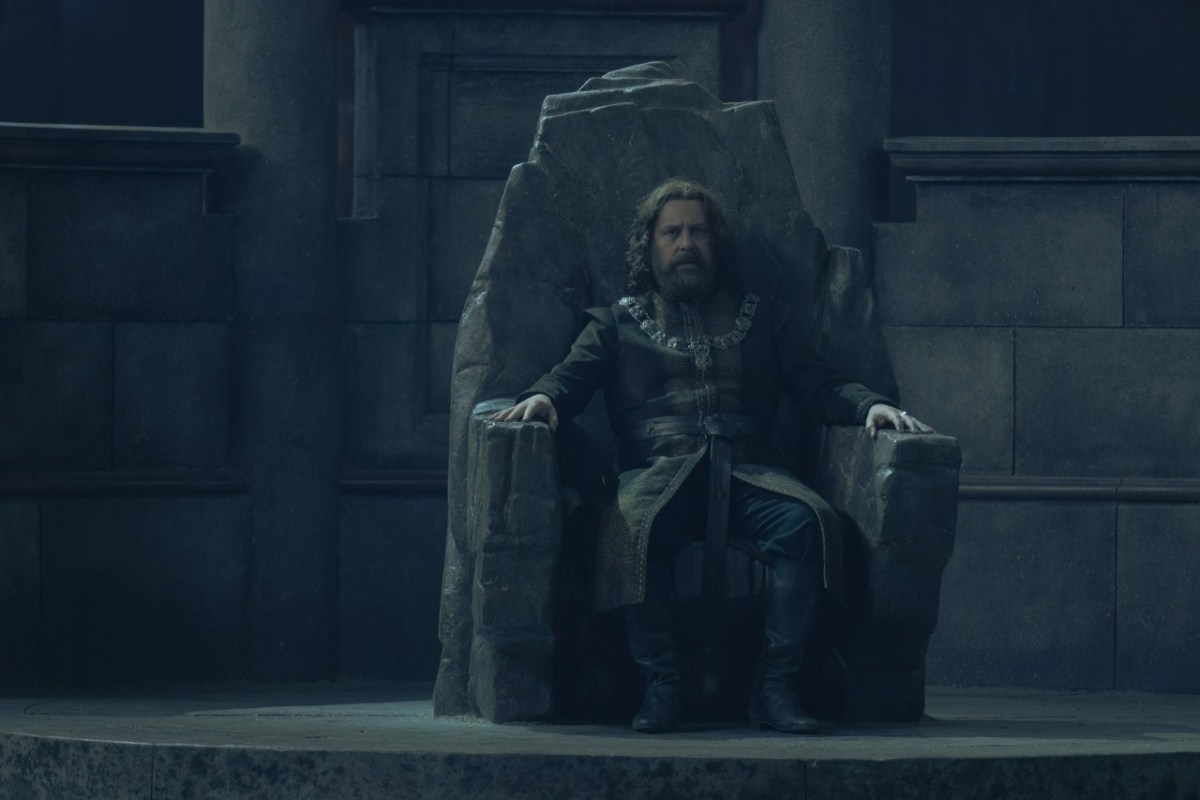
Reading the event in Fire & Blood, nothing would suggest that what Aemond did was anything but intentional. He took off from Storm’s End and chased after Lucerys — who sadly stood no chance against him, what with Vhagar being the largest dragon alive and the storm that was raging through the sky — with the explicit intent of killing him, consequences be damned.
The Stranger had other plans. For surely it was his dread hand behind the ill chance that brought the two princelings together at Storm’s End, when the dragon Arrax raced before a gathering storm to deliver Lucerys Velaryon to the safety of the castle yard, only to find Aemond Targaryen there before him. […] Prince Lucerys recalled his promise to his mother. “I will not fight you. I came here as an envoy, not a knight”. “You came here as a craven and a traitor,” Prince Aemond answered. “I will have your eye or your life, Strong”. […] Had the sky been calm, Prince Lucerys might have been able to outfly his pursuer, for Arrax was younger and swifter… but the day was “as black as Prince Aemond’s heart,” says Mushroom, and so it came to pass that the dragons met above Shipbreaker Bay. Watchers on the castle walls saw distant blasts of flame and heard a shriek cut the thunder. Then the two beasts were locked together, lightning cracking around them. Vhagar was five times the size of her foe, the hardened survivor of a hundred battles. If there was a fight, it could not have lasted long.
Fire & Blood, the Dying of the Dragons: A Son for a Son
At the same time, there’s nothing in that Fire & Blood passage that explicitly denies things couldn’t have gone in another way— leading to the same result, of course, but giving the whole thing a dramatically different meaning. And considering how the change that was made by the House of the Dragon execs has stirred up quite a bit of discussion among fans, I thought I’d add my two cents to it.
Changes in ‘House of the Dragon’
So, first things first. What exactly are the changes made to the first dragon clash in House of the Dragon? From what we’ve seen in Episode 10, Aemond doesn’t really plan to kill Lucerys— he taunts him in Lord Borros’ hall and then chases him through the skies with Vhagar, sure, but all he wants is to give him a good scare and send him running back to Dragonstone.
There isn’t another way to explain the horror that takes hold of him once the dragons start to follow their own instinct and Vhagar goes in for the kill— his expression is a telltale sign that he knows full well he just pushed the Dance beyond the point of no return and that he didn’t intend to.
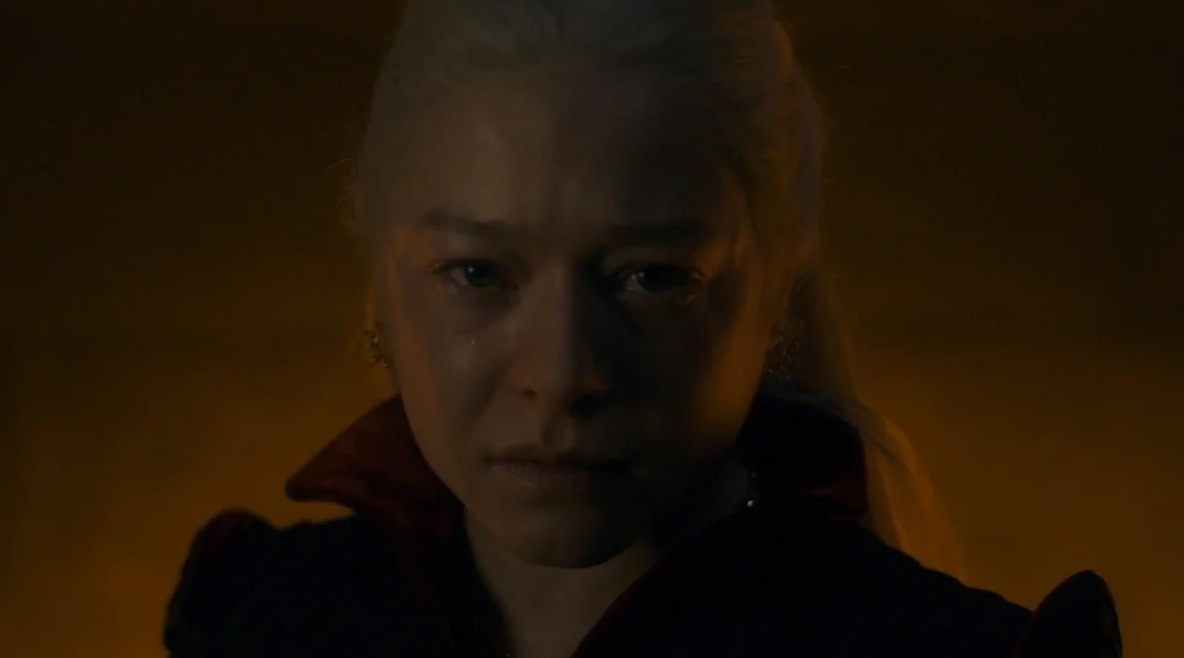
I’ll admit that I didn’t like this change the first time I saw the episode. Maybe because being an annoying book reader is one of my main personality traits and I tend to immediately react negatively to any change from canon material before actually taking a moment to consider whether or not it has sense.
I thought that making the dragons disobey their riders’ commands and do what they wanted was yet another example of the show taking away agency from characters who were supposed to have plenty of it in the Fire & Blood story— what with Alicent being completely in the dark about Otto’s scheming to crown Aegon or Rhaenys’s empty girl boss moment at the Dragonpit.

And while I still maintain that certain better choices could have been made in regards to both Alicent and Rhaenys — let’s just say that my general eleven-word assessment about the entire show is that it had some amazing intentions but they weren’t always brilliantly executed — I’ve done a full 180 and come around to this idea of Vhagar killing Lucerys and Arrax almost on her own accord. It’s actually a brilliant narrative move, and also very coherent with what other pieces of the A Song of Ice and Fire canon have laid down.
Precedents in the Canon
There have been other instances of dragons having a mind of their own and going against their riders’ wishes, especially if said dragons are particularly old or particularly powerful. We’ve seen this on Game of Thrones as well, with Daenerys’s very first flight on Drogon— while he does take swoop in and save her life in Meereen, he then doesn’t respond to any of her attempts at making him fly away from the Dothraki Sea.
And then there’s the terrible story of Aerea Targaryen— niece of Old King Jaeherys and Queen Alysanne as the daughter of their siblings Aegon Targaryen and Rhaena Targaryen. Yes, I know, they all have the same names all the time. This was around 50 AC, at the beginning of the Old King’s reign after the death of the third King to sit the Iron Throne, the terrible Maegor the Cruel.
Aerea was described as an adventurous young girl, so much so that when she was just a few years older than ten she claimed the dragon Balerion for herself— the most formidable of all the dragons in possession of House Targaryen. The two disappeared from Dragonstone for a year, and no matter how far and wide the King or his sister — Aerea’s mother — searched, the princess was nowhere to be found.
They returned after more than a year, and Aerea was unrecognizable— thin, feverish, covered in burn marks. Something terrible had happened to the princess, and the story has got plenty of gory details, but the point is— Aerea hadn’t been able to command a dragon such as Balerion, who had decided to fly where he wanted and return to the place of his birth, the ruins of Valyria. The ancient magic that had plagued that place ever since the Doom had struck caused Aerea’s death— so much so that the King her uncle passed a law after the princess’s funeral that forbade all Westerosi from sailing to the ruins of Valyria under penalty of death.
It makes sense then for Vhagar, who by the time of the Dance of the Dragons is more than a hundred years old, to have discarded Aemond’s commands— especially when one considers how dragons and the bond with their riders have been established in the A Song of Ice and Fire lore.
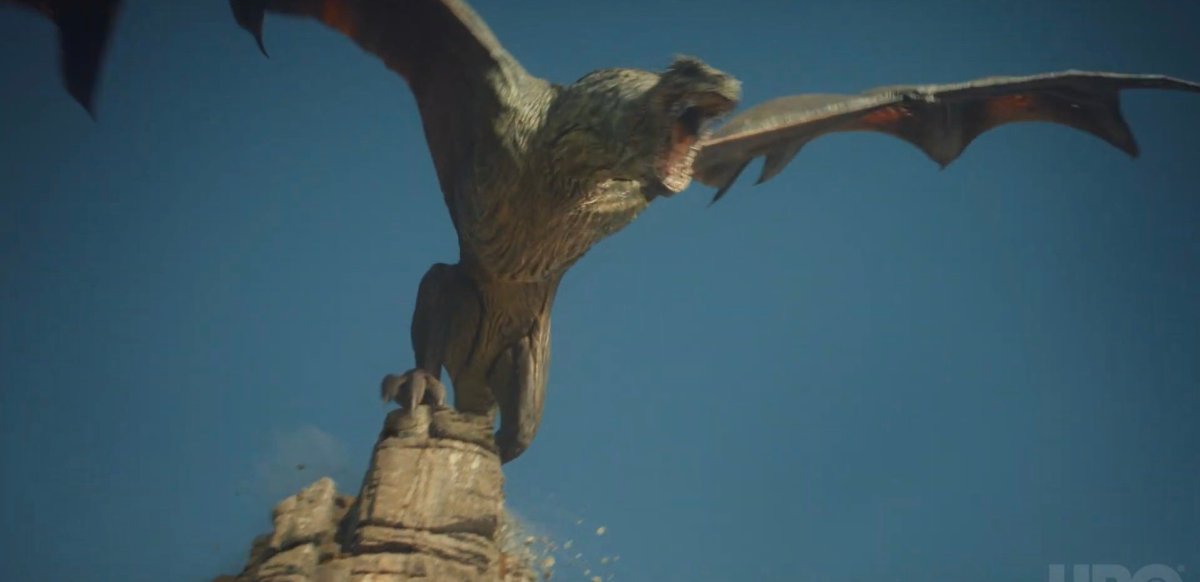
Dragons are magical creatures, powerful and mysterious— the Doom of Valyria erased much of the knowledge that had been gathered surrounding them and even House Targaryen certainly didn’t know as much as their ancestors did throughout their three centuries of rule over the Seven Kingdoms. What’s certain is that they’ve never been shown to be completely sentient, in the way dragons in the Inheritance Cycle have been— just to make an example of another story prominently featuring dragons. Sure, they’re not just a means of getting from Point A to Point B quickly or of incinerating your enemies in five minutes, but at their core, they’re still animals— and not completely tamed either.
Then there’s the question of the bond. Maester Gyldayn, the one who writes the historical chronicle known as Fire & Blood, says that “we shall not pretend to any understanding of the bond between dragon and dragon rider; wiser heads have pondered that mystery for centuries. We do know, however, that dragons are not horses, to be ridden by any man who throws a saddle on their back”.
It’s clear that a dragon chooses their rider just as much as riders choose them— especially if it’s a bond that’s been forged later in life as it has happened for Aemond and Vhagar, who haven’t been together as newborn and egg in the cradle according to the Targaryen custom. It’s also pretty evident that dragon and dragon rider can feel each other’s emotions, to some extent— see Caraxes and Syrax feeling Daemon’s and Rhaenyra’s pain while being pierced by arrows and giving birth respectively.
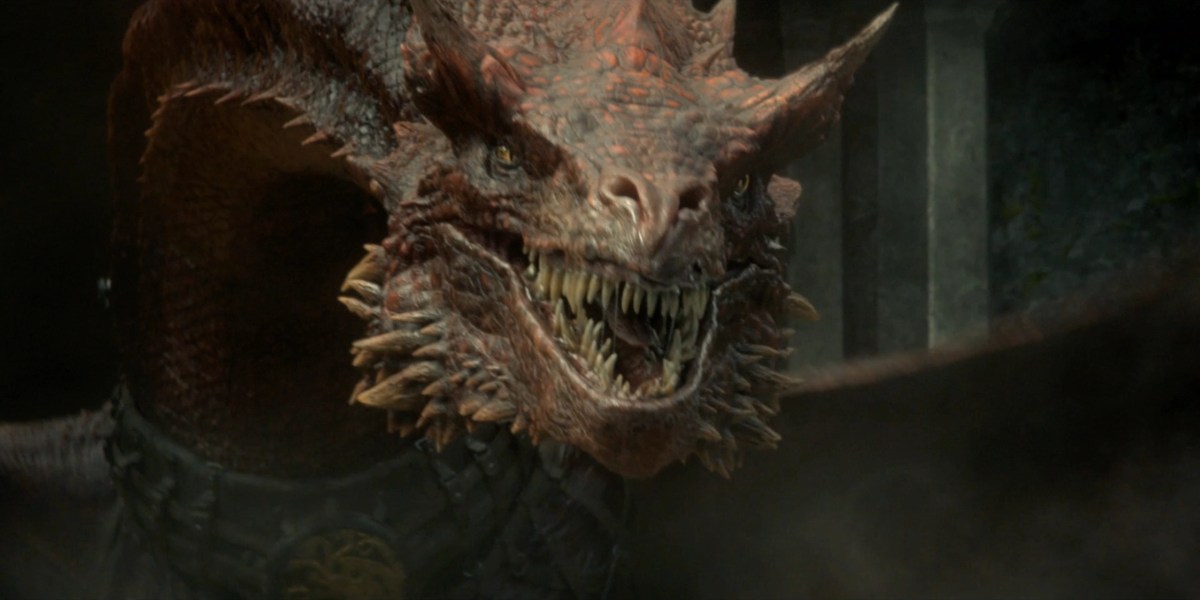
When you take all these elements, the events of Episode 10 make perfect sense. Both Arrax and Vhagar were influenced by their riders’ emotions— Lucerys’s terror, which prompted Arrax to defend himself with that burst of fire, and Aemond’s desire for revenge, which spurred Vhagar on. And once Vhagar was on the target, that was it, no turning back no matter how many “Dohaeris” Aemond screamed— all memes about Old Grandma Dragon aside, there’s only so much you can joke around with the equivalent of a bomber plane.
Yet another proof that the youngest generation of Targaryens have been recreating their parents’ disputes ever since they were children without maybe fully realizing their consequences. Which is a great callback to what Princess Rhaenys said as the tourney in Episode 1 turned bloody— “these knights are as green as summer grass, none of them know real war”.
The Only thing That Can Destroy the House of the Dragon
The very first episode of the season starts with adult Rhaenyra’s voiceover, telling us how “the only thing that could tear down the House of the Dragon was itself”. With an opening like that, especially if one knows what goes down in Fire & Blood, it’d not be a stretch to think that the only people who could bring the Targaryens down from the height of their power are other Targaryens.
But then there’s what Viserys says to Rhaenyra, still in Episode 1, when he has resolved to name her his heir to protect the realm from Daemon. He reveals Aegon the Conqueror’s dream to her and then warns her of how “the idea that we control the dragons is an illusion. They’re a power men should never have trifled with. One that brought Valyria to its doom. If we don’t mind our own histories, it will do the same to us”.
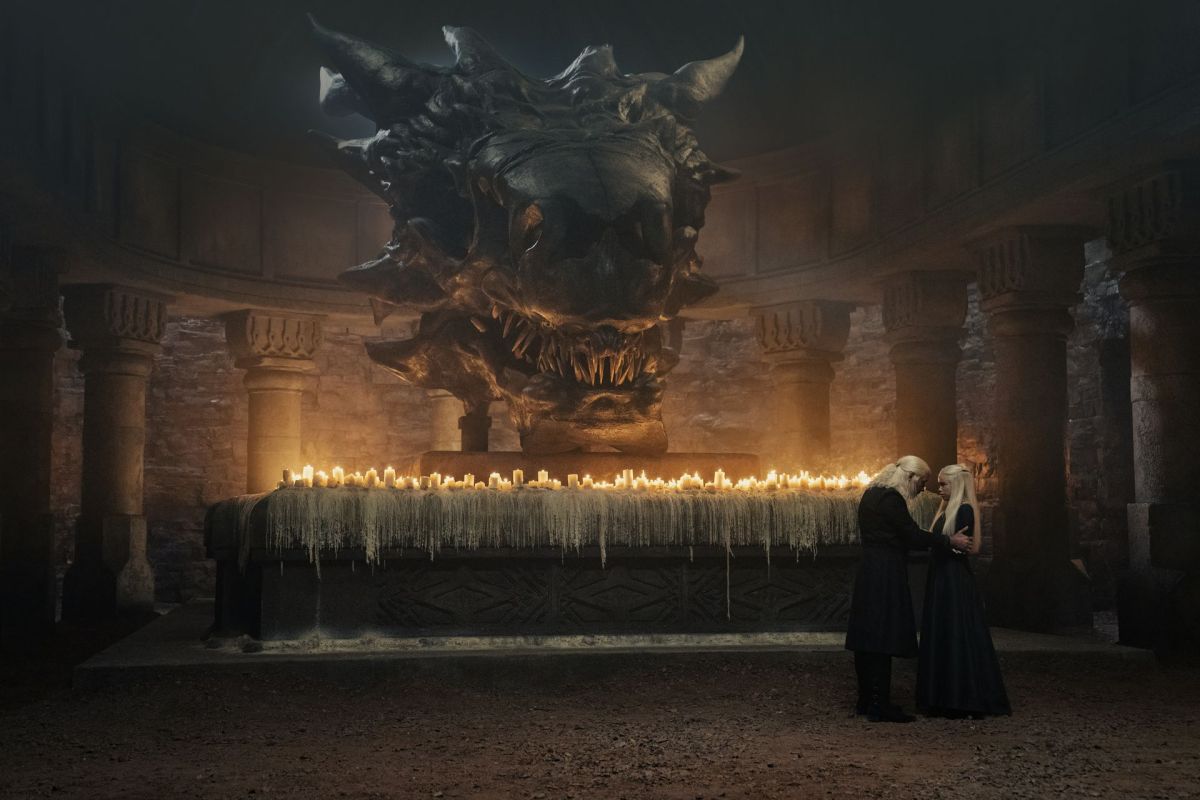
How brilliant it is then that the thing that ends up causing House Targaryen’s downfall is the very same thing that made it climb to the highest seat of power— it’s not “just” members of the family going against one another, it’s the dragons. A great and dangerous force that the Targaryens can control, yes, but not completely— the very representation of their hubris, like Lucerys and Aemond learned all too well at the end of Episode 10.
(image: HBO)



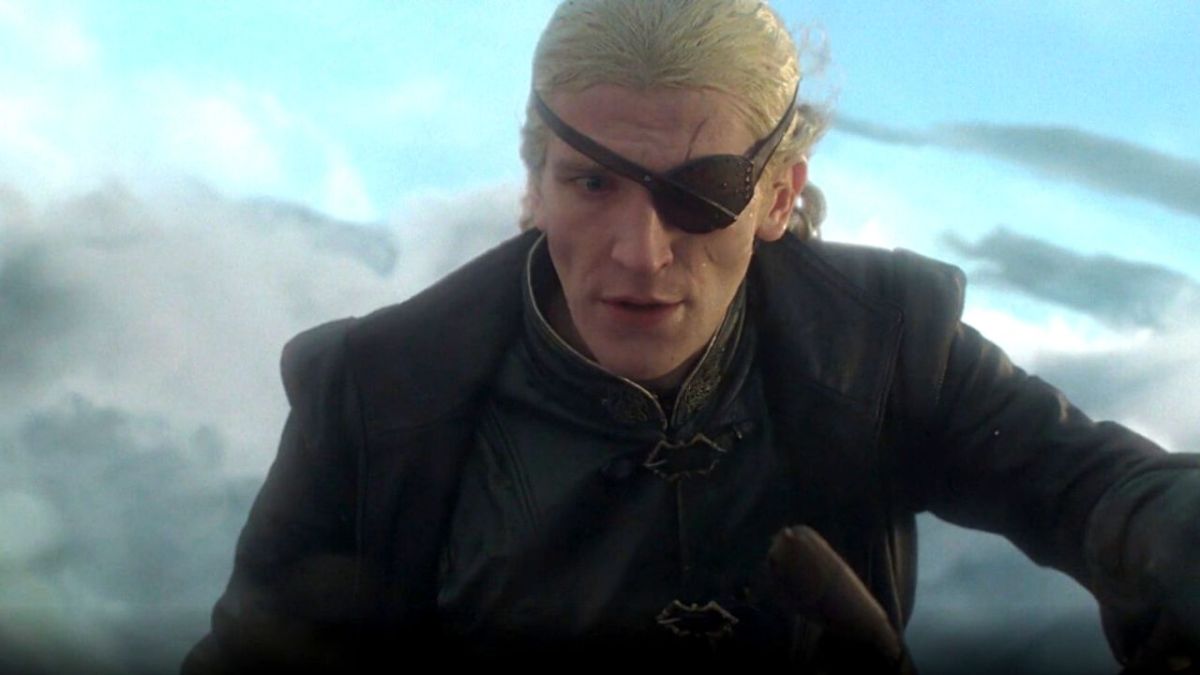





Published: Oct 26, 2022 07:05 am